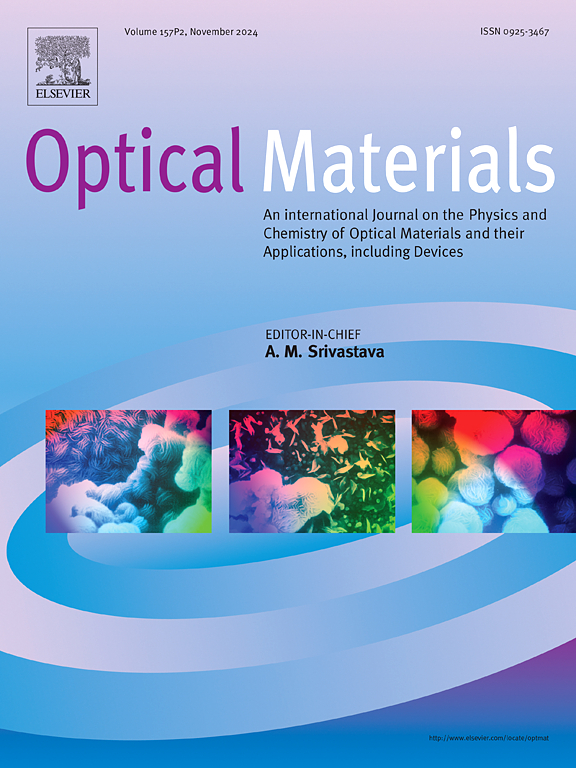Exploring the luminescent and thermal properties of Sm3+ doped BaYAlZn3O7 for latent fingerprint detection and optoelectronic applications
IF 3.8
3区 材料科学
Q2 MATERIALS SCIENCE, MULTIDISCIPLINARY
引用次数: 0
Abstract
Current luminescent nanophosphors face challenges in latent fingerprints (LFPs) detection, such as poor adhesion, low contrast on complex surfaces, and limited photostability. In white light emitting diodes (w-LEDs), issues like low thermal stability, poor color purity, and efficiency loss hinder performance. This study addresses these gaps by preparing Sm3+ doped BaYAlZn3O7 (BYAZO: Sm³⁺) phosphors prepared using solution combustion method with enhanced luminescence, strong adhesion, and high thermal stability, making them promising for both forensic and LED applications. X-ray powder diffraction analysis coupled with Rietveld refinement confirmed the formation of a single-phase hexagonal structure (space group: P63mc (186)) in the BYAZO: Sm³⁺ samples. These phosphors exhibited a prominent orange-red photoluminescence (PL) peak at 644 nm, attributed to the electric dipole transition 4G5/2 → 6H9/2 of Sm³⁺ ions. The optimal doping concentration for maximum luminescence intensity is determined to be 5 mol %. Temperature dependent photoluminescence (TDPL) studies revealed exceptional luminous thermal stability (LTS), with the emission intensity retaining 92.70 % of its original value at 420 K. The activation energy (Ea) is calculated as 0.305 eV, further underscoring the high thermal robustness of the phosphor. Fluorescence intensity and lifetime analyses indicated maximum relative temperature sensitivity (SR) and absolute temperature sensitivity (SA) values of 4.21 % K⁻1 and 0.120 K⁻1 at 300 K, respectively. The chromaticity coordinates of BYAZO:5Sm3+ are consistently situated in the orange-red region of the 1931 Commission Internationale de l'Éclairage (CIE) diagram, demonstrating high color purity (CP: 95.7 %). Furthermore, the potential application of BYAZO:5Sm3+ phosphors in LFPs detection is evaluated across various surface types. The phosphor displayed excellent adhesion to ridge patterns, enabling clear distinction between ridges and furrows, while providing detailed information necessary for fingerprint (FP) individualization. These findings highlight the superior luminescent properties and multifunctional applicability of BYAZO:5Sm3+ phosphors, positioning them as promising candidates for advanced LFPs detection and optical thermometry applications.

求助全文
约1分钟内获得全文
求助全文
来源期刊

Optical Materials
工程技术-材料科学:综合
CiteScore
6.60
自引率
12.80%
发文量
1265
审稿时长
38 days
期刊介绍:
Optical Materials has an open access mirror journal Optical Materials: X, sharing the same aims and scope, editorial team, submission system and rigorous peer review.
The purpose of Optical Materials is to provide a means of communication and technology transfer between researchers who are interested in materials for potential device applications. The journal publishes original papers and review articles on the design, synthesis, characterisation and applications of optical materials.
OPTICAL MATERIALS focuses on:
• Optical Properties of Material Systems;
• The Materials Aspects of Optical Phenomena;
• The Materials Aspects of Devices and Applications.
Authors can submit separate research elements describing their data to Data in Brief and methods to Methods X.
 求助内容:
求助内容: 应助结果提醒方式:
应助结果提醒方式:


